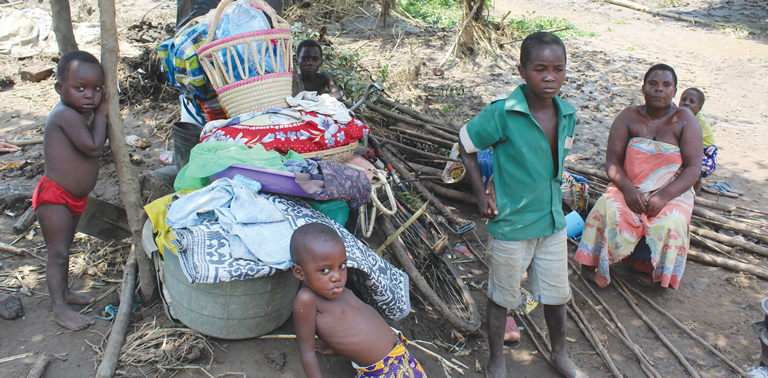Children caught in storm Ana
When tropical storm Ana hit Southern Malawi, Rose Gubudu, 16, fled her crumbling home and took refuge at Thabwa Primary School, where she learns.
“I was awake when surging water flooded my home around midnight,” she says. “We escaped just before the roof collapsed. All my belongings were ruined including my notebooks and clothes.”

The Department of Disaster Management Affairs (DODMA) reports that the tropical storm that swept across much of Southern Africa in January affected over 870 000 people and displaced 23 000 from the 200 000 affected families. The rapid findings show the tragedy claimed 37 lives, with 20 people still missing.
Ruth is among the 750 displaced people from 200 households who now compete for limited space and facilities with students at her school.
“It rained non-stop from Sunday evening to Tuesday evening. By sunset on Monday, the Shire River, Lisuli Dam, and Mwamphazi River had merged, reducing my village to an island,” she recalls.
The adolescent girl now shares an overcrowded classroom with older women at the evacuation camp with limited access to safe water, sanitation, hygiene and privacy.
“Being uprooted from home is disturbing, but it’s worse when you end up in a crowded place where you cannot freely study or change clothes.
The displaced people have occupied four classrooms and teachers have had to suspend some classes.
“Congestion exerts pressure on schools,” says deputy head teacher Bassah Kaligomba. “The displaced persons now compete for classrooms, toilets, water and other essentials meant for students and teachers.”
However, children continue to learn despite the hardships caused by the cyclone which affected millions in Malawi, Mozambique and Madagascar.
“Adults shift to a nearby church at daybreak so that children can continue to learn. When it rains, we have to send children home so the displaced community can take shelter in classrooms,” Kaligomba laments.
During the storm, the Ministry of Education suspended schooling for a day to prevent deaths and injuries.
But as scorching sunshine returned to the battered floodplain, some children did not go back to school for a week.
At nearby Mikolongo Primary School in Chikwawa, the worst hit district, only Standard 8 children returned to class within two weeks after floodwater had subsided.
“These boys and girls are here because preparing for primary school leaving examinations,” said headteacher Alfred Siyambiri. “In lower classes, only five to 10 children are coming to learn in classes of 110 to 120.”
The school has an enrolment of 1 680 students, but the teacher-in-charge could not tell when they would all return as the storm blew away the school kitchen and classroom roofs.
“The disaster has affected learning, especially for displaced children. They cannot concentrate on lessons because they are worried about what happened in their homes. Some have no food, clothes or books,” says Siyambiri.
Unicef is working with the Government of Malawi to provide relief to children in affected communities, including emergency evacuation camps. The United Nations agency is supporting the assessment and response efforts covering nutrition, education, water, sanitation and hygiene (Wash), protection and health.
Estere Tsoka, Unicef emergency specialist at government’s emergency operation centre in Blantyre, said the impact of the tropical storm on women and children had been immense.
“My role at the command centre is to update the entire team on the support Unicef is providing, the needs of children and women as well as gaps in the sectors that we co-lead with government agencies.”
Building on its Cyclone Idai response in 2019, Unicef has created safe learning spaces for displaced children in some camps. It has also provided Wash supplies to Nsanje and Chikwawa in the Shire Valley. The consignment includes water treatment chemicals for 15,000 people.





